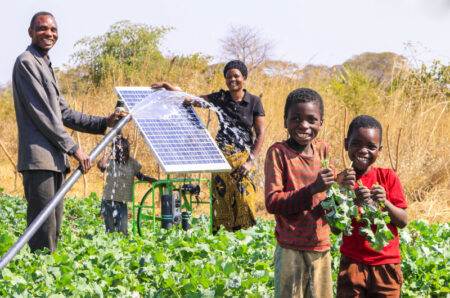Lusaka as one of the fastest developing cities in southern Africa has acquired a rather vital sanitation fund to bring to life the $243 million Lusaka Sanitation Program (LSP), jointly funded by the African Development Bank (AfDB), the European Investment Bank, German Development Bank and the World Bank.
Read:Lusaka emerald auction generates US$18.6 million revenue
AfDB places Zambia’s economy growth (Real GDP) at an estimated at 4.0 per cent in 2018, compared to 4.1 per cent in 2017, whereas—the bank argues that, construction has also attributed to the growth, citing public infrastructure projects which increased at 10 per cent in 2018.
However, United Nations Children’s Emergency Fund (Unicef) poor sanitation results in a 1.3 per cent loss to Zambia’s national Gross Domestic Product (GDP) annually, which also contributed to Zambia’s high rate of child stunting (40 per cent), hence—research argues that, addressing the latter downplays the risk of stunting.
According to AfDB, the implementer of the program—Lusaka Water and Sewerage Company (LWSC), says about 7,000 households in the George, Kanyama and Chawama suburbs of the capital will benefit from improved sanitation. The objective is to increase access to sustainable sanitation services to the city’s two million residents, especially low-income households, and strengthen LWSC’s capacity to manage sanitation services.
The project itself has manifested uniquely in the eyes of project funders, as they describe the excavation surgically.
“Sometimes, it looks to me like surgery in the belly of an ancient beast,” says Herbert Chinokoro, senior water, and sanitation engineer at the African Development Bank’s Country Office in Lusaka, Zambia as quoted by AfDB.
Read:Zambia Latitude Hotels Group nets funding for African expansion
The project stands to benefit a myriad of the population in Zambia and perhaps, pave a way for a robust replication over space and time, due to the following snapshot of the water and sanitation situation in Zambia, recorded by Unicef in 2015.
About 61 per cent of the population use basic drinking water services (86 per cent in urban areas and 44 per cent in rural areas), 31 per cent of the population use a basic sanitation service( 49 per cent in urban and 19 per cent in rural areas), while 15 per cent of the population has access to basic hygiene services such as handwashing facility with soaps and water (26 per cent urban, 5 per cent rural) and 21 per cent, 34 per cent and 46 per cent of schools do not have basic drinking water, sanitation, and hygiene services.
On the same mark, AfDB indicate that, about 70 per cent of Lusaka’s residents live in peri-urban areas, which are relatively high density, unplanned neighborhoods, largely comprising lower-income residents. About 90% of these townships rely on substandard pit latrines, which pose health hazards to the communities. Others use sewers, septic tanks or defecate in the open.
“Lusaka is a relatively flat city and suffers from a recurrent sanitation crisis that continues to claim lives through annual outbreaks of cholera, typhoid, and dysentery. There is also persistent environmental pollution,” Chinokoro commented.
He goes on to add that, about 57 per cent of Lusaka’s water supply comes from shallow wells, and sadly—prone to several contaminants from pit-toilets and through fissures in the underlying rocks.
“The most vulnerable areas are the low-income neighborhoods, making sewerage an attractive sanitation option. Poor management of solid waste and stormwater drainage further compound these problems,” he adds.
In a city of more than 2.5 million people, such projects stand to transform sanitation landscapes immensely, thus– LWSC sanitation engineer Mwansa Nachula says the sanitation program will improve sanitation facilities and prevent water-borne diseases. “Pit latrines in Lusaka are actually occupying more space than water points and there are a lot of shallow wells and dugouts sited very close to the pit latrines, which makes for easy contamination of the water,” she says
Further, the project’s aim is to protect the groundwater from contamination by building improved toilets with fully lined substructures that prevent leakage of waste.
“These structures include seat or squat toilets, superstructure with customers’ choice of brick or block; render and paint, door and door latch, among other options,” Nachula commented.










